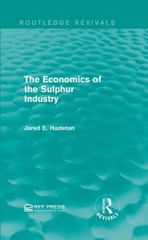Question
1.What happens to the money supply and to aggregate demand when confidence in financial markets is boosted? Assume the policy interest rate stays the same
1.What happens to the money supply and to aggregate demand when confidence in financial markets is boosted? Assume the policy interest rate stays the same throughout. Illustrate your answer using a 3-equation model diagram
2. Why are loans to households and firms considered risky? Make sure you refer to and explain
the following terms in your answer:
a. Uncertainty.
b. Moral hazard.
c. Asymmetric information.
3.Set out a simple balance sheet for a single commercial bank (as in Fig. 5.9). Define each item in turn and discuss why that item has been labelled as an asset or a liability. Why is net worth on the liabilities side of the balance sheet?
4.What are the channels through which banks can fund their lending? In the model presented in this chapter, can banks influence the level of aggregate demand in the economy?
5.What are the key differences between the way that monetary policy is conducted in the
3-equation model (from Chapter 3) and in the 3-equation model with the banking system?
Does this change the policy implemented by the central bank following economic shocks?
6.Use the 3equation model to show the impact of a reduction in consumer confidence on
the economy. Make sure you show the period 1 mark-up on your diagram and discuss what
happens to both the policy rate and the lending rate (as in Fig. 5.13). How would you expect
a reduction in competition in the banking sector due to mergers between banks to affectthe
macroeconomy?
Step by Step Solution
There are 3 Steps involved in it
Step: 1

Get Instant Access to Expert-Tailored Solutions
See step-by-step solutions with expert insights and AI powered tools for academic success
Step: 2

Step: 3

Ace Your Homework with AI
Get the answers you need in no time with our AI-driven, step-by-step assistance
Get Started


